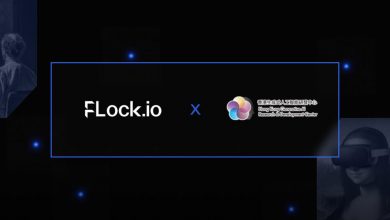23 Innovative Ideas for Inclusive Professional Development in Small Businesses

Small businesses face unique challenges in professional development, but innovative solutions exist. This article presents expert-backed strategies for inclusive and effective employee growth. From flexible training modules to peer-led learning circles, these ideas can transform how small businesses approach skill development.
- Offer Flexible On-Demand Training Modules
- Implement Open Skills Exchange Initiative
- Empower Employees to Co-Design Development Tracks
- Create Collaborative Skill Pods
- Establish Rotating Cross-Departmental Mentorship Program
- Dedicate Weekly Time for Team Learning
- Combine Knowledge Base LMS with Sharing Sessions
- Provide Diverse Learning Options for Inclusivity
- Prioritize Open-Level Skill Mapping and Mentoring
- Foster Equity Through Multifaceted Development Approach
- Build Visible Pathways for Growth
- Launch Peer-Led Learning Circles
- Create Cross-Functional Mentorship Program
- Offer Flexible Learning Opportunities
- Provide Monthly Self-Directed Learning Budget
- Make Regulatory Training Accessible to All
- Utilize AI for Personalized Skill Mapping
- Empower Team Members to Lead Projects
- Implement Peer-Led Learning Sprints
- Encourage Informal Peer-to-Peer Workshops
- Integrate Learning into Weekly Team Rhythm
- Trust Employees with Personal Growth Budgets
- Promote Company-Wide Skill-Sharing Sessions
Offer Flexible On-Demand Training Modules
One approach that has worked well for us is offering flexible, on-demand training modules that employees can complete at their own pace. Instead of adhering to traditional one-size-fits-all workshops or fixed schedules, we provide access to digital learning paths tailored to different roles and skill levels, whether someone is in operations, logistics, or marketing.
This method eliminates many of the pressures and barriers associated with formal development programs, especially for team members balancing work with family or other responsibilities. The impact has been noticeable. Team members feel more empowered to grow in areas they care about, and it has encouraged more cross-functional curiosity and collaboration. People are not just upskilling; they are taking ownership of their growth in ways that align with their personal and professional realities.
Rasmus Norgaard, Group CMO, TITAN Containers
Implement Open Skills Exchange Initiative
One unique approach we’ve implemented to make professional development truly inclusive is our “Open Skills Exchange” initiative. Instead of traditional top-down training, every contract employee we hire — regardless of role or tenure — can both teach and learn skills in peer-led micro-sessions scheduled during flexible hours. This model not only removes barriers related to cost and scheduling but also values the diverse expertise already present within our team.
The impact has been transformative: team members who once felt overlooked are now recognized as experts due to their additional learning, fostering a culture of mutual respect and collaboration. We’ve seen increased engagement, higher retention, and a surge in creative problem-solving as employees feel empowered to contribute beyond their job descriptions. By democratizing learning, we’ve built a workplace where growth is accessible to all, and every voice matters — a story that redefines what professional development can look like for small businesses.
Vijay Sairam, Founder & Educator, Remote Jobs Central
Empower Employees to Co-Design Development Tracks
One approach we’ve taken is letting employees co-design their own development tracks based on personal and professional goals — not just job titles. Instead of a top-down training agenda, we built a flexible system where team members pitch what they want to learn and how they want to learn it. That could be a paid online course, a mentor outside the company, or even time to shadow another department.
We set a budget per employee, but more importantly, we gave them the agency to shape their growth. The only requirement? They had to share what they learned in a team session — informally, no slides or pressure. This turned knowledge-sharing into a cultural norm, not a checkbox.
The impact? We saw an increase in cross-functional respect and curiosity. People started seeing each other as multidimensional — not just their roles, but their ambitions. It also surfaced hidden strengths and interests we never would’ve uncovered otherwise. Inclusion, for us, became less about accessibility to resources and more about the freedom to define what growth looks like for each person.
Patric Edwards, Founder & Principal Software Architect, Cirrus Bridge
Create Collaborative Skill Pods
Throughout the quarter, employees have the opportunity to nominate a skill they’re most interested in learning across a platform where other employees can also vote for learning the same skill. Once the proposed skill has at least three employees interested, team members from different functions or seniority levels get the chance to explore it together for the following four weeks.
This is accomplished by choosing a small project related to our real work, such as writing a LinkedIn post, automating a workflow, or designing a quick user study. They then receive a budget in learning credits that can be used for a course, tool, resource, or even an AI tutor, and work together to complete the task.
At the end of the four weeks, the members put together a 10-minute demo that can be accessed by anyone, explaining what they learned, how it can be applied in their different functions, and the benefits it had on their workflows.
This has been an excellent way to build professional development as it removes intimidation by working together, rather than working alone. Peer learning also allows them to complement each other and highlight uses from different perspectives, making it even more beneficial. By implementing what they learned in a hands-on real project, it instantly becomes useful and something that will be used, instead of just learning for the sake of learning.
Neha Rathi, Founder, Nifty
Establish Rotating Cross-Departmental Mentorship Program
One unique approach we’ve taken is creating a rotating mentorship program that pairs experienced machinists with newer team members across departments, from the shop floor to quality control. This system isn’t just about skill transfer; it encourages collaboration between people who might not otherwise interact day-to-day. To make it truly accessible, we schedule sessions during regular hours and ensure that language support and hands-on learning styles are part of the process.
We also built an internal knowledge base where mentors record demos, tips, and techniques, so learning doesn’t stop at the end of a shift. This has helped level the playing field; regardless of someone’s starting point or background, everyone has a chance to grow. The result has been stronger communication, increased cross-functional respect, and a noticeable boost in overall team morale.
Jacky Chow, Chief Operating Officer, Fast preci CNC machining
Dedicate Weekly Time for Team Learning
Every Friday, our whole team takes a breather for an hour to dive into a pool of learning resources ranging from online courses to dev tools, whatever sparks their interest.
As a reluctant learner who dragged his feet on new stuff early in my career, I forced myself into this habit of carving out an hour each week to sign up for something new, just to cut out any excuses. And guess what? It worked so well for me that I wanted my team to give it a try too, and let me tell you, it’s been a game-changer.
Here’s why it’s so effective. First, when everyone’s geeking out over learning something new, you can’t help but jump in. It’s like a group vibe that pulls you in! Second, you’ve got your favorite work buddies right there to toss ideas around with, so it’s not just you staring at the screen, feeling all lonesome. Third, there’s this low-key pressure to share what you’ve learned with the crew come next week, which motivates you to actually dig in over the next few days. To top it off, the company foots the bill for all these resources, so you’re leveling up without denting your wallet.
It’s a total win-win. Our team gets hooked on the habit of always learning, stacking new skills like trophies. And we get to work with people who are constantly growing, bringing all that fresh knowledge straight into their work. It’s like everyone’s evolving, and you can see the results in what we deliver!
Stanley Anto, Chief Editor, Techronicler
Combine Knowledge Base LMS with Sharing Sessions
To make professional development more inclusive and accessible, we built a custom Knowledge Base LMS that gives every employee, regardless of location or schedule, on-demand access to onboarding materials, SOPs, and skill-building courses in areas like design, development, and digital marketing. The flexibility allows team members to learn at their own pace and revisit materials whenever they need a refresher.
However, what truly transformed our culture was the addition of monthly knowledge-sharing sessions. These informal, peer-led workshops invite team members to teach something from their area of expertise. Last month, for example, our Head of SEO, Shankar Subba, led a session for developers and designers, showing how their work directly impacts search rankings. It sparked new conversations, discussions, and idea sharing between the team members.
This combination of accessible, self-paced learning paired with real-time team teaching has made professional growth feel less like a requirement and more like a shared experience. It has strengthened trust, encouraged cross-functional collaboration, and empowered quieter team members to step into leadership roles by sharing what they know.
Nirmal Gyanwali, Founder & CMO, WP Creative
Provide Diverse Learning Options for Inclusivity
We took professional development to a new level by offering inclusive learning options. In many organizations, training is delivered solely face-to-face and, through no fault of your staff, these delivery methods are extremely exclusionary to employees who may have busy lives, different life pace demands, or work from home.
To counter this, we have provided flexibility for our team to choose from live classroom training; on-demand, recorded training; recorded, on-demand content; or a combination of different delivery channels. By providing flexible choices, we removed the barriers that many people face when trying to access and complete training, allowing it to suit individuals with various job titles in the company.
The proof of this approach is showing before our eyes; our team is more engaged and motivated as they can select what works better for them. Our team is owning their professional development and is being very collaborative, even willing to share their ideas with others. Our new approach has created a positive and inclusive environment to overcome the issues and barriers that usually impede participation and has also created a collective growth culture. Not only that, but it has made it possible for our team to progress in their careers.
Ben Richardson, Owner, Acuity Training
Prioritize Open-Level Skill Mapping and Mentoring
For me, one of the best ways I’ve made professional development more inclusive and accessible in my own business is by prioritizing open-level skill mapping and peer mentoring.
I don’t believe development should be reserved for senior roles or top performers. I want everyone on the team to feel they can grow here. So I encourage people to identify the skills they want to build, whether it’s technical expertise or leadership capabilities, and then we actively match them with colleagues who are strong in those areas.
I’ve seen firsthand how this breaks down silos and hierarchy.
It lets newer team members teach what they know, and experienced staff stay open to learning. It turns professional development into something shared and collaborative, not something that feels gated or exclusive. I’ve found it builds trust, keeps people engaged, and reinforces the idea that growing talent isn’t just my job as the leader, but something the entire team owns together.
Jeff Mains, Founder and CEO, Champion Leadership Group
Foster Equity Through Multifaceted Development Approach
When it comes to making professional development more inclusive and accessible to all employees at my recruiting firm, I know that focusing solely on opportunity is not enough. Opportunity is just one piece of true equity. Equally important are access and support, because real barriers often prevent full participation. In other words, sometimes simply opening the door isn’t enough.
That’s why I’m committed to offering development opportunities in multiple formats. This means designing programs that accommodate different schedules, learning styles, and life circumstances. It also means pairing training with meaningful mentorship to provide flexible learning supported by real human connection. Most importantly, it means fostering a culture where seeking professional growth isn’t limited to the loudest voices but is encouraged and expected from everyone.
This approach not only empowers individuals to thrive, but it also strengthens our team dynamics. When every employee has a clear path to grow and feels genuinely supported, trust deepens, collaboration flourishes, and people are more willing to share their best ideas. It builds a culture of shared success, where collective investment creates a stronger, more resilient team over time.
Linn Atiyeh, CEO, Bemana
Build Visible Pathways for Growth
We realized early that making professional development inclusive isn’t about fancy budgets — it’s about building a culture of visible pathways and active support.
We created an internal “growth map” that outlines clear roles, future positions, and the skills tied to each. So when someone on our support team says, “I’d love to get into product,” we don’t just send them a course link — we pair them with someone in that role, give them real micro-projects, and help them shadow the process. It’s all in-context, hands-on, and rooted in real work.
This approach has transformed our team dynamic. People don’t feel boxed into a title — they feel they’re on a journey. And when growth is woven into the fabric of the work itself, it becomes radically more accessible, especially in small, resource-conscious teams.
Inclusion isn’t about offering everything — it’s about building systems where everyone can see themselves growing.
Vasilii Kiselev, CEO & Co-Founder, Legacy Online School
Launch Peer-Led Learning Circles
In my early career role at a company with fewer than 50 employees, budgets for professional development were historically limited. We recognized early on that traditional learning formats — external workshops, expensive certifications, or time-intensive courses — weren’t always financially or logistically feasible. However, we strongly believed that professional growth shouldn’t be a privilege for just a few; it needed to be a shared, inclusive experience for all employees — regardless of role, level, or location.
That’s when we implemented what they now call Peer-Led Learning Circles — a unique, bottom-up approach to professional development designed to remove barriers and empower every team member as both a learner and a teacher.
Here’s how it works: Every month, we surveyed the team to identify skill gaps and areas of curiosity — from Excel tricks to conflict resolution to sustainability practices. Employees then volunteered to lead short, interactive sessions (30-60 minutes) based on their strengths, personal experiences, or recent projects. These were scheduled during work hours and kept informal, allowing everyone — from warehouse staff to admin support — to contribute, engage, and ask questions in a safe, supportive environment.
One powerful example was when a junior operations coordinator led a session on time-saving automation tricks in Google Sheets. What made it remarkable wasn’t just the content — but the confidence boost she gained by stepping into a leadership role, and how it sparked cross-functional interest in digital tools. After that session, several employees began sharing their own hacks and insights, creating a culture where learning became an everyday behavior.
To further ensure accessibility, we recorded each session and offered them in a shared library with searchable transcripts. This allowed part-time staff or those on different shifts to learn at their own pace.
Since launching the Peer-Led Learning Circles, the employee engagement scores grew by 18%, and internal mobility had increased — especially among those who previously felt overlooked for leadership paths. More importantly, it shifted the team dynamics from siloed departments to a more collaborative and connected culture. People no longer see learning as something handed down from the top — it is co-created and celebrated across all levels.
Viraj Lele, Operational Performance Manager, DHL Supply Chain
Create Cross-Functional Mentorship Program
I wanted professional development to be accessible to every team member, so that it wouldn’t be something reserved only for senior staff. What worked for us was creating a cross-functional mentorship program. Instead of typical senior-to-junior mentoring, I paired people from completely different departments. Junior developers were matched with hardware designers or project managers. Learning stopped being about just technical skills and became about understanding the whole business.
For example, I paired one junior developer with a senior engineer from our hardware team. The developer learned about embedded systems from a totally different perspective and finally understood how their code fit into the product’s entire lifecycle. The senior engineer picked up fresh programming techniques and saw problems through completely new eyes.
This approach completely transformed our communication, built real shared responsibility, and strengthened collaboration across every team. I’ve noticed how professional development stopped feeling like a hierarchical thing and became about collective growth. Now the whole team operates differently. Everyone sees themselves as both a mentor and someone who can learn, regardless of their title or how long they’ve been with the company.
Michal Kierul, CEO & Tech Entrepreneur, InTechHouse
Offer Flexible Learning Opportunities
I am determined to ensure that the principles of professional development apply to all team members. The way we have adopted a unique approach is to provide flexibility in learning according to the needs of each individual. We have included a combination of face-to-face workshops, computer-based courses, and group-based learning circles. This allows employees to select the most favorable form, which could be a practical lesson, an online course with the possibility of self-paced learning, or a discussion with other people.
To further enhance its effectiveness, we have ensured that the learning opportunities are adaptable to different skill levels and learning styles. We also encourage individuals to set personal development objectives and foster a cooperative atmosphere where they feel comfortable sharing their progress.
This method has made the team more active and collaborative. It gives employees the confidence to take charge of their development, resulting in enhanced camaraderie and transparency. Likewise, the freedom of choice in learning has created an environment where professional growth is seen as a collaborative effort.
Meera Watts, CEO and Founder | Entrepreneur, Siddhi Yoga
Provide Monthly Self-Directed Learning Budget
I provided each of the team members with $150 per month to select their own learning. No approvals. No tracking. It only had to connect with the work somehow. This made development a tool rather than a task. I have seen it being used by a team member to teach herself how to do simple video editing, and she actually created all our YouTube videos. Another rewrote a landing page that was critical to the business when he finished a UX writing course, reducing bounce rates by 22 percent in the process.
The greatest change was in how individuals began to share what they learned without being told to do so. Updates were shared in meetings, and they became solution-focused. It eliminated the strain and allowed individuals self-regulation over their development. This enabled the entire group to become more interested in each other and more helpful to one another.
Dorian Menard, Founder and Business Manager, Search Scope
Make Regulatory Training Accessible to All
At our company, building compliance software for the life sciences means everyone, from sales to support, needs to speak the same regulatory language. One change we made early on was flattening how professional development worked across the team. Instead of separating product knowledge by department, we made our internal QMS training materials available to every employee, regardless of role.
That included onboarding guides for ISO 13485, breakdowns of 21 CFR Part 11, and real customer implementation walkthroughs. This was not a casual library; it was the same documentation our validation team used. The point was not just access. It was signaling that quality and compliance were shared responsibilities, not siloed ones.
The impact showed up in small ways. Our business development staff began using exact regulatory phrasing in sales calls without overpromising. Product feedback came from support staff who understood how a design control audit might flag a workflow. And when we ran cross-team retrospectives, the conversations were sharper because the baseline knowledge was already there.
In a company where clients depend on audit readiness and accurate records, inclusion means more than equal opportunity; it means equal literacy in the language of quality.
Allan Murphy Bruun, Chief Revenue Officer & Co-Founder, SimplerQMS
Utilize AI for Personalized Skill Mapping
Every person processes information differently, and so we have taken the unique approach of utilizing skill mapping to better address our various team members’ professional development needs. Having a team that is diverse in interests and backgrounds must be taken into account when putting together a professional development plan, so having an effective method to assess skills and interests is a must.
Therefore, we implemented a plan using AI tools to assess each team member’s skills, filter out bias, find strengths, and determine learning models in order to tailor our professional development programs. In addition, it impacted our team dynamics by finding hidden abilities and encouraging collaboration. It is through skill mapping that we have been able to address our team members’ needs and initiate a professional development program that best benefits them and our business.
Jason Bandarra, CEO, Sonoma Stays
Empower Team Members to Lead Projects
We stopped thinking of professional development as courses and started treating it as opportunities.
That meant giving people the chance to lead something before they felt 100% ready. No gatekeeping. No prerequisites. Just trust and support along the way. It leveled the playing field — not everyone learns best through theory. Some grow by doing. And when you open those doors early, you find out how much potential was already sitting in the room.
Mateusz Mucha, Founder, CEO, Omni Calculator
Implement Peer-Led Learning Sprints
One unique approach we have taken is implementing “peer-led learning sprints.” Rather than relying on formal courses or expensive workshops, we have given our team members the opportunity to lead short, focused sessions on topics they are passionate about. Many times these are negotiation tactics, productivity tools, sales psychology — for example. These are scheduled during normal work hours and recorded for future viewing, so everyone has access regardless of schedule.
We weren’t sure how it would go in terms of interest and participation, but so far this has worked really great for our team dynamics. It has helped create a culture of shared ownership over learning, boosting confidence, and has allowed quieter team members to step into a leadership role in a low-pressure and less intimidating way.
Chris Sorensen, CEO, PhoneBurner
Encourage Informal Peer-to-Peer Workshops
We implemented a peer-to-peer learning initiative where staff members take turns hosting short, informal workshops on topics they’re passionate about, both technical and non-technical. This initiative eliminates barriers such as cost and difficult scheduling while recognizing diverse expertise across the team. It has created a culture where continuing education feels organic and open, and has fueled interdepartmental cooperation that previously didn’t exist.
George Fironov, Co-Founder & CEO, Talmatic
Integrate Learning into Weekly Team Rhythm
One unique approach we’ve taken to make professional development more inclusive and accessible is creating a culture where learning is continuous, visible, and shared.
We focus on personalized growth plans, and we’ve made space for learning to be part of our weekly rhythm. Every week, we hold a short team session where we discuss new developments, ideas, and tools people are exploring.
We also have a dedicated internal channel that acts as our “think tank.” It’s where team members drop links to courses, share something new they’ve learned, or ask questions to deepen their understanding. Everyone contributes, regardless of role or seniority, and that’s what makes it powerful.
It’s not just about individual learning; it’s about collective growth.
The result?
People feel more connected, more curious, and more confident about stepping outside their comfort zones.
And that mindset shows up in the way we build, solve, and collaborate every day.
Jyoti Tewari, Director HR, Webuters Technologies Pvt Ltd
Trust Employees with Personal Growth Budgets
We stopped trying to run one big training for everyone and just gave each team member a small monthly budget to learn in their own way. Some picked up design tools, others watched marketing tutorials, one person even used it for a photography course. No rules, just growth on their terms.
What it changed was the vibe. People started casually sharing cool things they learned, and it didn’t feel like “training,” it felt like everyone just got more confident in what they liked doing. When people feel trusted to grow how they want, they actually put more into their work. That shift made us stronger as a team, not just smarter as individuals.
Matias Rodsevich, Founder & CEO, PRLab
Promote Company-Wide Skill-Sharing Sessions
In our company, anybody from any position can nominate one of their skills or any subject and deliver a short session to the rest of the staff. With every senior and junior member together in a room, it flattens the office hierarchy, builds genuine trust between us, and produces ideas that would’ve never emerged if decisions were made by the head of the company and passed down.
I’ve seen just how much allowing everyone to contribute to a meeting encourages each member to communicate, especially individuals who are likely sitting quietly through a traditional company meeting. New skills and tools are regularly joining the digital marketing industry. By getting every member of your team to host a talk about anything in the business they are fit to discuss, the entire team becomes better learners than any course or session could produce.
For any business to use the “welcome everyone in to contribute” approach to development is a simple change with enormous potential benefits. Honestly, some of our best company stories have come from sessions that I initially didn’t see the value in.
Callum Gracie, Founder, Otto Media
Related Articles
- Building a Culture of Innovation: Lessons from the Most Innovative
- The Future of Finance: Exploring Innovative Inclusive Banking Solutions
- How Software Development Empowers Small Businesses to Thrive





